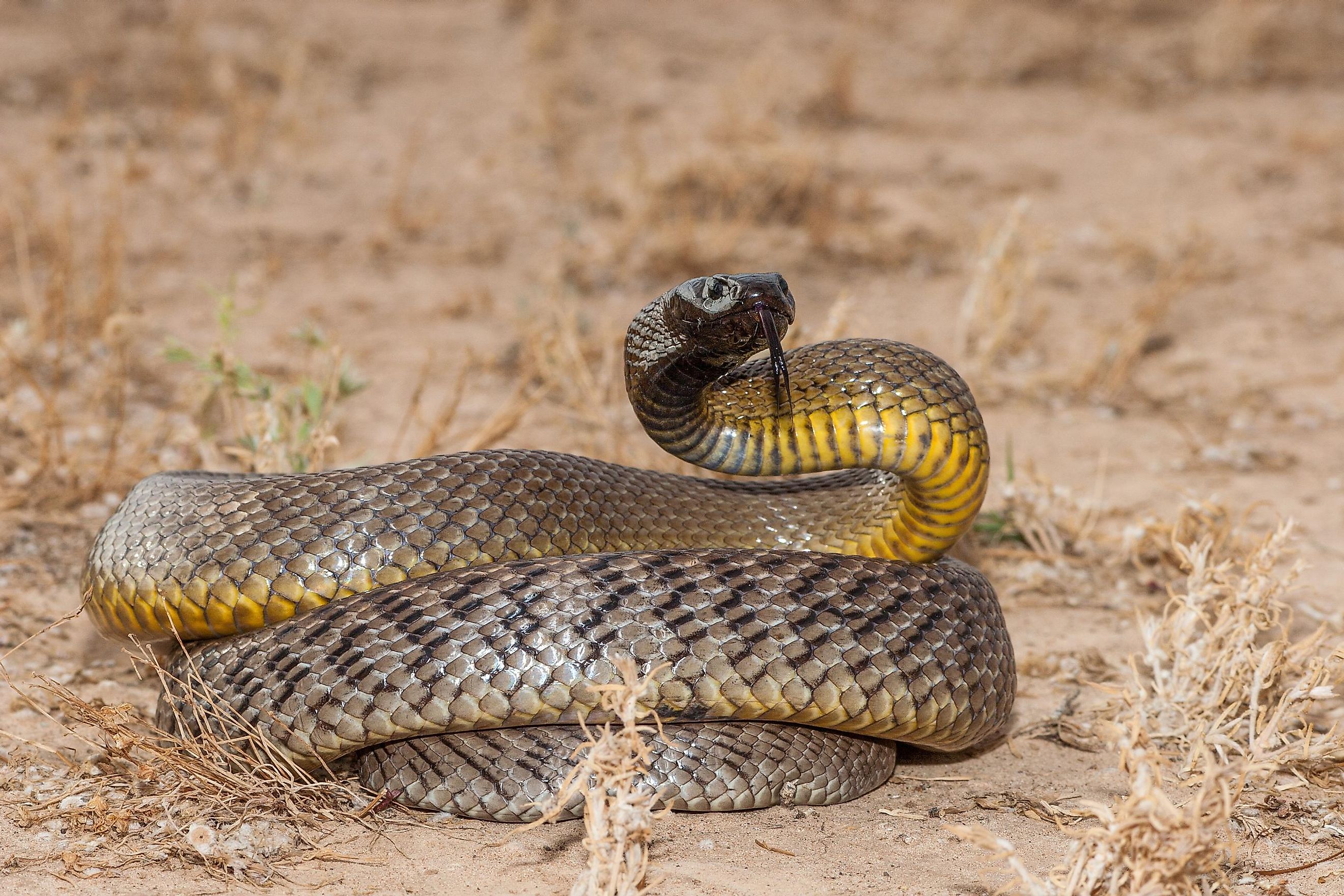
The 10 Most Venomous Snakes In The World
The World Health Organization estimates that anywhere from 81,000 to 138,000 people are killed each year due to snake bites, though the real figure is assumed to be even higher. Victims are often residents of smaller communities in developing countries, far from medical facilities and the necessary antivenoms. This not only exacerbates the lethality of each attack but likely also obscures the true death toll. Some snakes deliver a high dose of low-potency venom, while others are more surgical in their approach. In this article, snakes have been ranked on the basis of venom strength in terms of LD50. They are as follows:
- Hook-Nosed Sea Snake
- Inland Taipan
- Russell's Viper
- Eastern Brown Snake
- Dubois's Sea Snake
- Black Mamba
- Tiger Rattlesnake
- Boomslang
- Yellow Bellied Sea Snake
- Common Krait
What Is LD50?
Scientists use a toxicology test called the median lethal dose, or LD50, to measure how much venom is required to kill half of the mice in the unlucky test groups. Though this methodology has been criticized on both a moral and scientific basis, it is currently the best way to rank the strength of each snake's venom. But it is important to remember that a more potent brew does not necessarily make for a more dangerous snake. Determining the latter depends on the frequency of human interactions, the snake's temperament, the volume of venom delivered in an attack, and how accessible antivenoms are. Therefore, these ten snakes are the most venomous (but not necessarily deadliest) snakes in the world.
1. Hook-Nosed Sea Snake - LD50 of 0.02 mg/kg
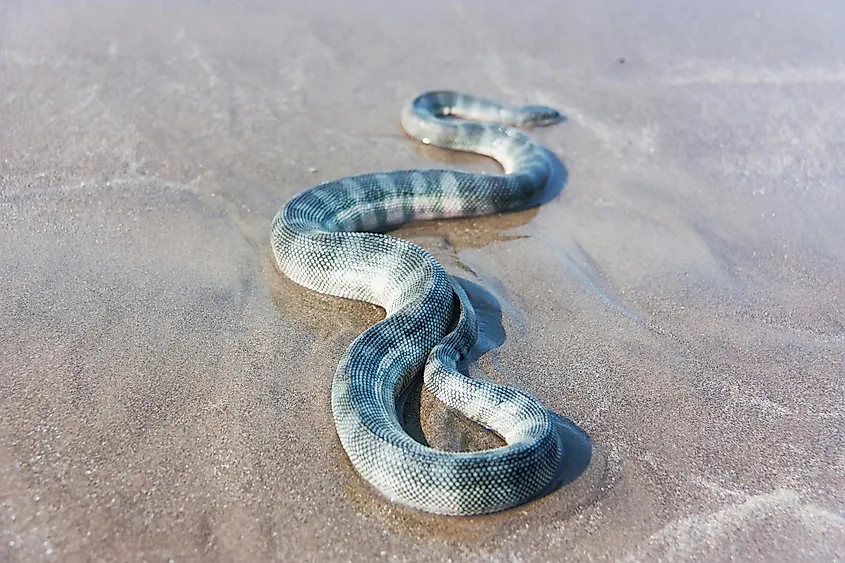
The world's most venomous snake, the hook-nosed sea snake (Enhydrina schistosa), has a startling LD50 rating of 0.02 mg/kg. This aggressive species can be found swimming along the coastlines of the Indian Ocean and the Arabian Sea, at depths of up to 100m (but often shallower), as well amongst the coastal vegetation. Though it has an infamous temperament (particularly during mating season), the hook-nosed sea snake likes to target fish. Humans should mostly keep an eye out for specimens that occasionally wash up on shore.
2. Inland Taipan - LD50 of 0.025 mg/kg
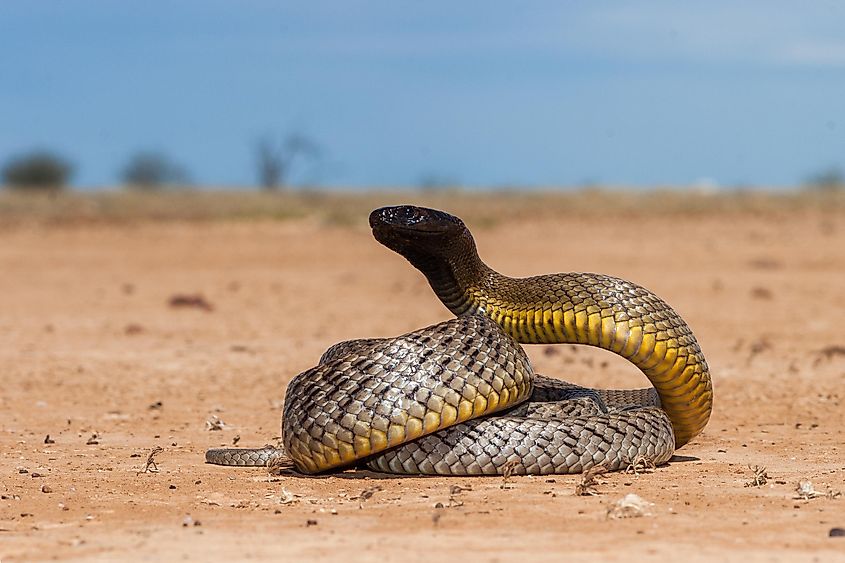
The inland taipan (Oxyuranus Microlepidotus) is a close contender for the deadliest venom (LD50 rating of 0.025 mg/kg). This Australian (Central/Eastern) serpent has even been nicknamed the "fierce snake" because of its potentially lethal strike. But even though it packs a punch that is hypothetically sufficient to kill hundreds of humans, the inland taipan goes out of its way to avoid attention and rarely bites people unless provoked. Rather, this reclusive species typically maintains a low profile except when hunting rodents during the morning hours.
3. Russell's Viper - LD50 of 0.03 mg/kg
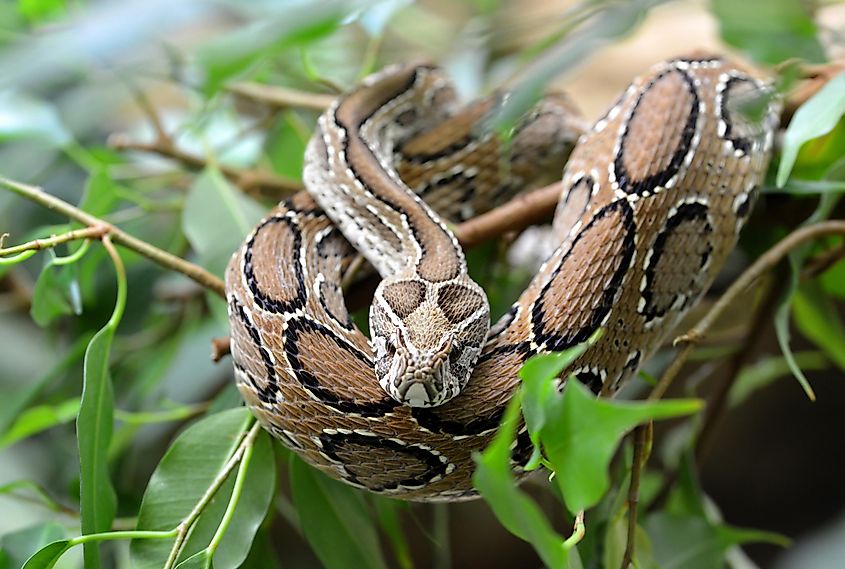
Named after Patrick Russell, the Scottish herpetologist that first discovered this member of the Viperidae family, Russell's viper (Daboia Russelii) is one of the larger venomous snakes on this list. Its presence throughout the Indian subcontinent, and its costly interactions with the humans in these areas, have landed this primarily nocturnal viper with many additional names. These include but are not limited to: the chain snake, the scissors snake, seven pacers, the lurker, and Chandra Boda (in reference to the moon-like patterns on its skin). Because these snakes gravitate toward farmlands, bite victims often fail to receive prompt treatment in time, which makes the Russell's viper not only one of the most venomous snakes in the world (LD50 of 0.03 mg/kg) but also one of the deadliest.
4. Eastern Brown Snake - LD50 of 0.035 mg/kg
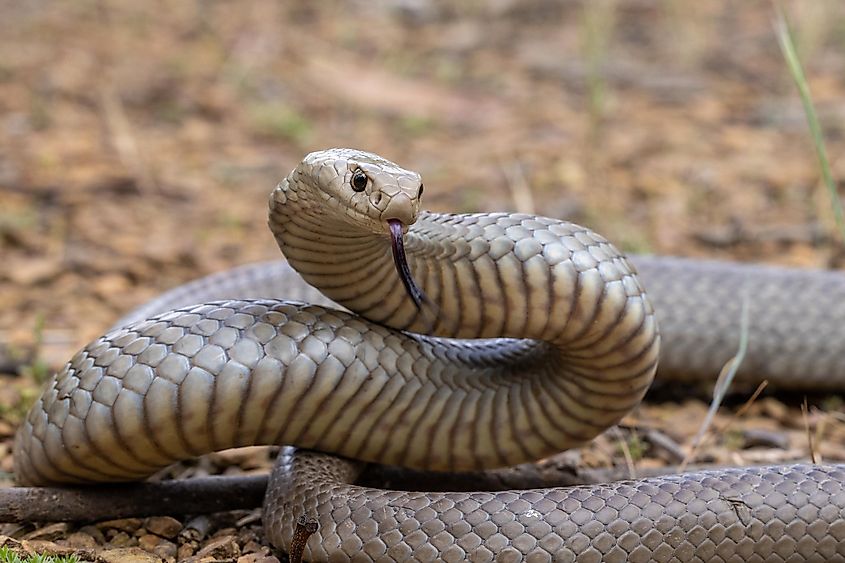
Also simply referred to as the brown snake (Pseudonaja textilis), this insidious elapid once again hails from Australia (Eastern and Central regions), as well as Southern New Guinea. Unlike the inland taipan, the brown snake is highly aggressive and also remarkably speedy. So even though its LD50 rating lags a bit (at approximately 0.035 mg/kg), the Eastern brown is more dangerous than its more venomous sibling. In a standard attack, between 5-75 mg of venom is delivered. And to put that into context, 3 mg is sufficient to kill an average-sized human. Because of this, the fiery brown snake accounts for around 60% of Australia's snake-bite fatalities.
5. Dubois's Sea Snake - LD50 of 0.04 mg/kg
This aquatic fiend packs a deadly surprise for unlucky fish, moray eels, and occasional humans who encounter it. Dubois's sea snakes (Aipysurus duboisii) lurk amongst the coral reefs and sandy sea bottoms off Australia's Northern Coast, as well as amongst some islands of the Southwestern Pacific Ocean. Though only dishing out 1 to 10 mg of venom per bite, this snake registers another highly-concentrated 0.04 mg/kg LD50 rating - more than enough to wreak havoc on a nosy scuba diver or a barefooted shoreline stroller.
6. Black Mamba - LD50 of 0.05 mg/kg
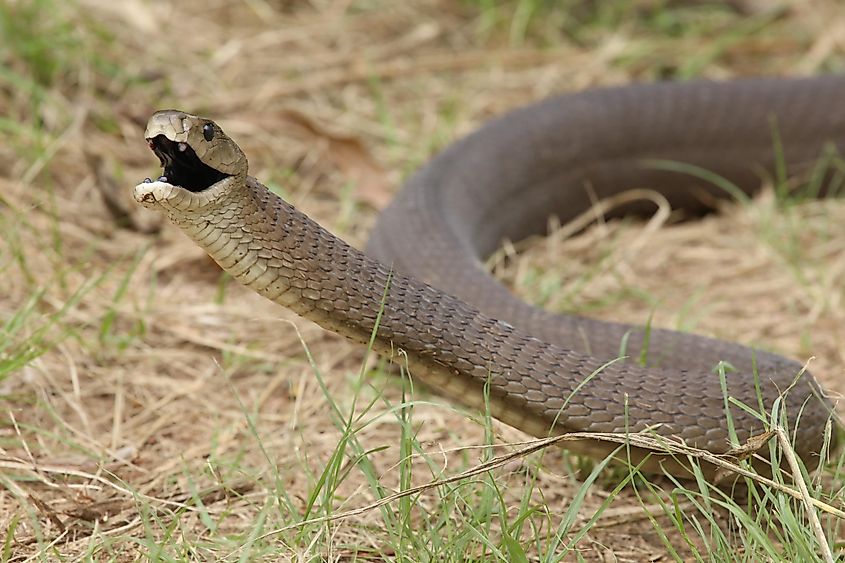
The notorious black mamba (Dendroaspis polylepis) is long (grows up to 14 feet), fast (slithers up to 12.5 mph), aggressive when it needs to be and to top it all off, has a witches' brew venom that ranks as low as 0.05 mg/kg on the LD50 scale. Though actually brown or olive-colored, the black mamba gets its name from the inside of its black-blue mouth, which it prominently displays when assuming a defensive posture. Its intimidating presence and historically deadly reputation (particularly before the advent of an antivenom) have elevated this snake to legendary status throughout Southern and Eastern Africa.
7. Tiger Rattlesnake - LD50 of 0.06 mg/kg
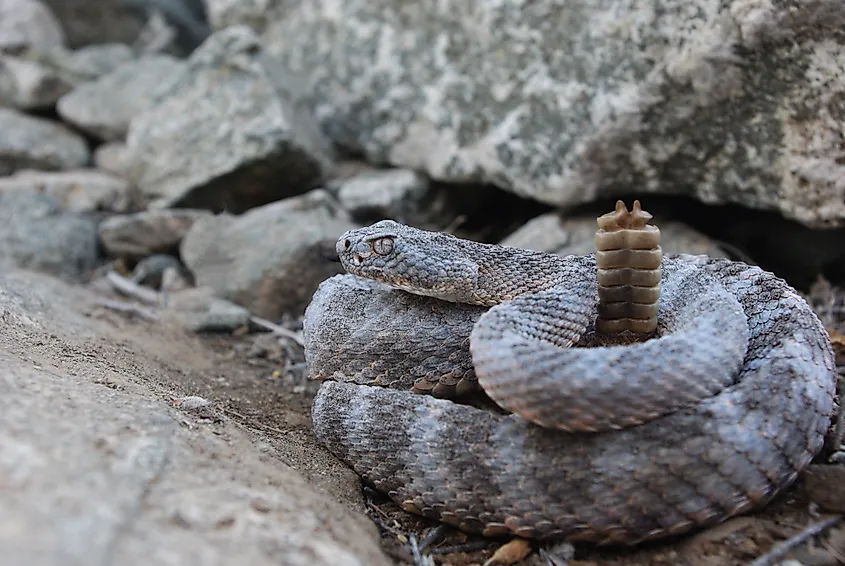
Listen closely for the sound of this snake's warning shaker while strolling near the Gulf of California, in Southcentral Arizona, and the Mexican state of Sonora. Though the tiger rattlesnake (Crotalus tigris) is a solitary creature that prefers to camouflage into the desert landscape, it is also quite excitable. It will strike with a vengeance when provoked. With an LD50 rating as low as 0.06, this subtly striped rattler is one of the most serious snakes in the Western Hemisphere.
8. Boomslang - LD50 of 0.07 mg/kg
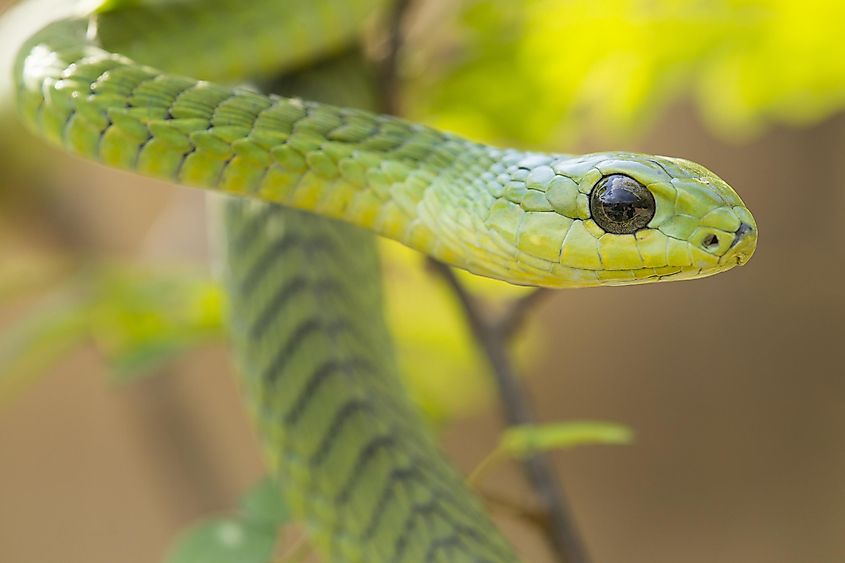
The boomslang (Dispholidus typus) is a tree-dwelling serpent that is widely distributed sub-Saharan Africa. While lingering in its arboreal abode, the boomslang is relatively benign for humans - preferring to blend in and wait patiently for an unsuspecting chameleon or bird to come within striking distance. With an LD50 of 0.07 mg/kg, this slender snake can easily dominate smaller creatures and is more than capable of causing problems for people if it happens to sink those rear fangs. Though often depicted with bright green skin, the boomslang actually varies quite significantly in appearance. But no matter the color scheme, these snakes are masters of disguise.
8. Yellow Bellied Sea Snake - LD50 of 0.07 mg/kg
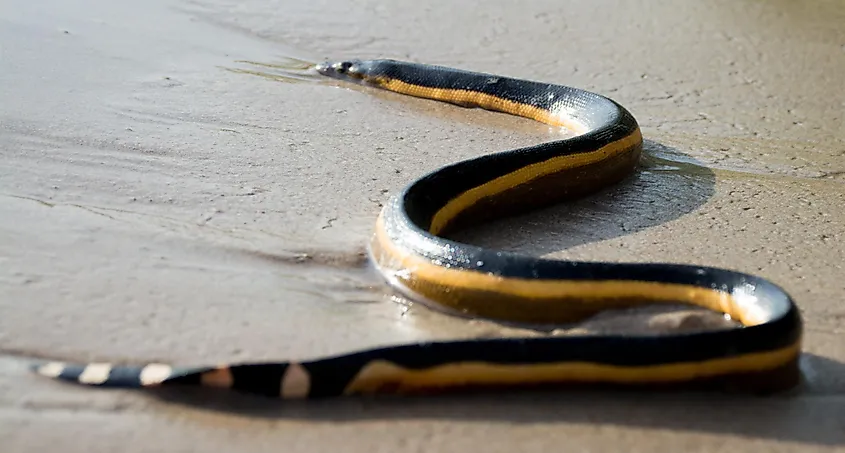
While many venomous snakes prefer to slide under the radar, the yellow-bellied sea snake (Pelamis platurus) is instantly recognizable. This ostentatious swimmer can keep to the water full-time, never needing to shift to land for survival. This species is so well-adapted to aquatic life that it can be found far out in the Pacific and Indian Oceans. When craving a fish, the yellow-bellied sea snake will often lie motionless near the surface and wait for a snack to approach. Though possessing a potent venom (LD50 of 0.07 mg/kg), this snake has small fangs and only injects a small volume per bite. Plus, the only time humans tend to get bitten is when a sick or injured specimen washes in close to shore.
10. Common Krait - LD50 of 0.09 mg/kg
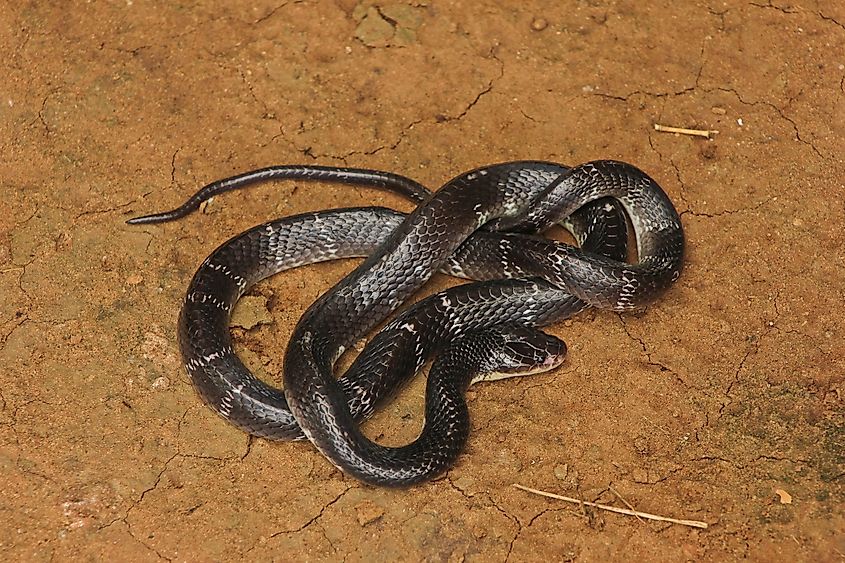
Rounding out the top ten is the Common Indian Krait (Bungarus caeruleus), or simply, the Common Krait or Indian Krait. These snakes can be found throughout the Indian subcontinent, across a wide variety of habitats (though often near water sources), and have an unfortunate habit of slipping into people's homes during the night. With an LD50 rating of 0.09 mg/kg and a high frequency of human interactions, the Common Krait contributes to many annual snake bite deaths in the region. Without treatment, 70 to 80% of victims are expected to die, and that figure only improves to 50% when antivenom is administered.
Venomous snakes, like most of their non-venomous brethren, do not tend to go looking for trouble. Instead, they stick to the shadows, the shrubbery, the open water, and the trees. Their powerful neurotoxins and anticoagulants are typically meant to disable small prey and only collide with human bloodstreams in response to perceived threats.
The 10 Most Venomous Snakes
| Rank | Snake | Where Found? |
Venom Strength (LD50 in mg/kg) |
|---|---|---|---|
| 1 | Hook-nosed snake | Tropical waters of Indian Ocean and west and central Pacific Ocean | 0.02 |
| 2 | Inland taipan | Australia (Queensland and South Australia) | 0.025 |
| 3 | Russell's viper | India, Sri Lanka, Bangladesh, Nepal, and Pakistan | 0.03 |
| 4 | Eastern brown snake | Australia, New Guinea island | 0.035 |
| 5 | Dubois's sea snake | Seas around Papua New Guinea, Australia, and New Caledonia | 0.04 |
| 6 | Black mamba | Sub-Saharan Africa | 0.05 |
| 7 | Tiger rattlesnake | Southwestern United States and northwestern Mexico | 0.06 |
| 8 | Boomslang | Sub-Saharan Africa | 0.07 |
| 8 | Yellow-bellied sea snake | entire tropical Indo-Pacific and extending further | 0.07 |
| 10 | Common Indian krait | India, Sri Lanka, Afghanistan, Bangladesh, and Nepal. | 0.09 |











